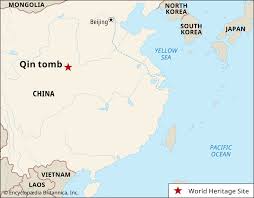
Where is the Terracotta Army Located?
The Terracotta Army, also known as the "Terracotta Army of the First Emperor of Qin" or the "Qin Shi Huang's Mausoleum", is a magnificent collection of terracotta sculptures depicting the armies of Qin Shi Huang, the first emperor of China. This awe-inspiring archaeological site is located in:
Shaanxi Province, China
More specifically, you can find the Terracotta Army in:
Xi'an Municipality
Xi'an, formerly known as Chang'an, is the capital of Shaanxi province and holds immense historical and cultural significance. It served as the capital of thirteen dynasties in Chinese history, making it one of the Four Great Ancient Capitals of China.
Lintong District
Lintong District lies on the eastern outskirts of Xi'an Municipality. The district is famed for its historical significance, particularly as the location of the Terracotta Army and other notable historical sites related to the Qin Dynasty.
Xiyang Village
This small village, Xiyang, is the precise location where farmers stumbled upon fragments of the Terracotta Army in 1974, leading to one of the most significant archaeological discoveries of the 20th century.
FAQs about the Terracotta Army
1. What is the purpose of the Terracotta Army?
The Terracotta Army was meant to serve as a symbolic guardian army for the tomb of Qin Shi Huang in the afterlife, protecting him and ensuring his continued rule in the next world. The figures demonstrate the emperor's power and the vast resources at his command.
2. When was the Terracotta Army built?
The creation of the Terracotta Army is believed to have begun around 246 BCE after Qin Shi Huang (then known as Ying Zheng) ascended the throne, and it continued for almost four decades until his death in 210 BCE.
3. Why is the Terracotta Army so significant?
The Terracotta Army is significant for a multitude of reasons:
- Historical Value: The life-size figures provide an unparalleled glimpse into the military practices, artistry, and cultural beliefs of the Qin Dynasty.
- Archaeological Significance: The discovery of the Terracotta Army revolutionized the understanding of the Qin Dynasty's military organization, weaponry, and burial practices.
- Artistic Mastery: The sheer scale and detail of the figures, each with its unique features and expressions, showcase the exceptional craftsmanship of ancient Chinese artisans.
- Cultural Treasure: The Terracotta Army stands as a testament to China's rich history and cultural heritage and is recognized as a UNESCO World Heritage site.